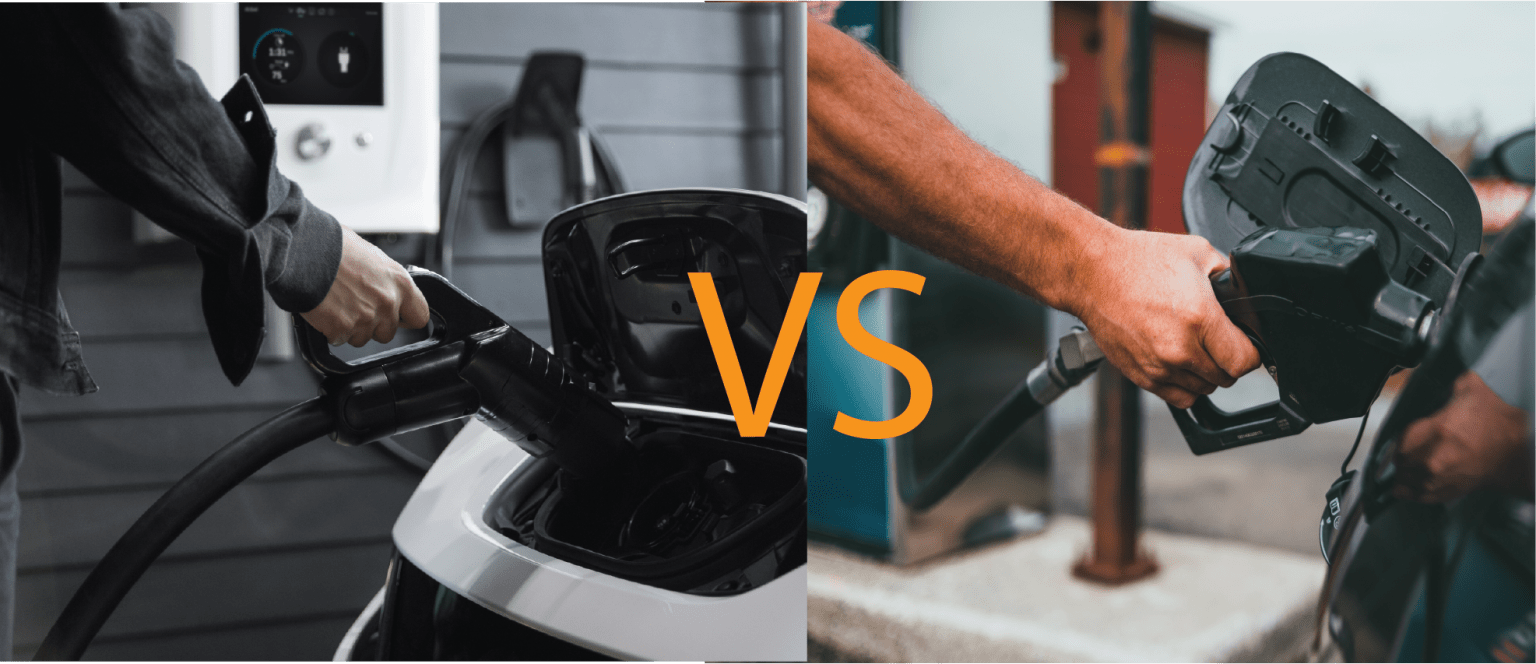It’s safe to say that for the vast majority of us, we’ll own at least one car during our lifetimes, and until recently, odds were that your car will be a diesel or petrol-powered automobile. In 2022, you have more car power options than ever before, and choosing electric vehicles over other car manufacturers’ models helps the environment for the better.
Over the course of the next few minutes, we’ll take you on a scintillating journey into electric vehicles, plug-in hybrid electric vehicles, as well as conventional petrol and diesel vehicles. Our aim is that by the end of this piece, you gain a better understanding of different vehicle types, what makes them stand out, and what you might want to consider going for in the future.
Full electric vehicles in Australia
It’s safe to say that electric vehicles have never been as popular as they are today; Electric cars have become part of the Australian dream. A family, a house, and an electric vehicle are all part of the Australian dream for the 2020s.
After all the interest and hype surrounding electric vehicles, the vast majority of us still need help understanding the basics of how and why electric vehicles work. Battery electric vehicles can also be referred to as all-electric vehicles, all have an electric motor instead of an internal combustion engine (ICE).
Electric vehicles use a big traction battery pack to power the electric motor, and in order to work, your EV must be plugged into an electric vehicle supply equipment (EVSE). As the name implies, electric vehicles run on electricity, do not emit any exhaust from a tailpipe and do not contain any of the harmful liquid fuel components available in other types of vehicles.
Some key components of all-electric vehicles include;
- The Lithium-ion Battery
Also known as an all-electric auxiliary, it provides power to most vehicle accessories.
- Electric Transmission
An EVs electric transmission transfers mechanical power from your electric traction to drive your wheels.
- Electric Traction Motor
While utilising power from your EVs traction battery pack, the electric traction motor drives the vehicle’s wheels.
- Charge Port
Your electric vehicle’s charge port allows it to connect to a power supply that’ll help charge the traction battery pack.
- Thermal Cooling System
An EV thermal cooling system maintains a proper operating temperature range for the power electronics, electric motor, engine, and more.
- DC/DC converter
A DC/DC converter converts higher-voltage DC power from the traction battery pack to a lower-voltage DC power necessary to recharge the auxiliary battery and run vehicle accessories.
PLUG-IN HYBRID electric vehicles
Plug-In Hybrid Electric Vehicles make use of a battery pack to power an electric motor and a secondary fuel source which may be petrol or diesel to power an internal combustion engine (ICE). If you own a PHEV, its lithium batteries can be charged using electric vehicle supply equipment, a wall outlet, regenerative braking, or through its internal combustion engine.
If you own a PHEV, it’s most likely going to run primarily on electric power until the battery gets close to being completely depleted; and it’s at this point that your PHEV automatically switches over to its internal combustion engine. PHEVs are effectively a middle ground between EVs and conventional petrol or diesel-powered vehicles, ideally giving you the opportunity to access the best of both worlds. There’s no denying the fact that a PHEV can serve as the ideal automobile for you. Some key components of a Plug-In Hybrid Electric Vehicle include:
- Auxiliary Battery
An auxiliary battery can provide the electricity needed to start your PHEV before the traction battery kicks in, and it may also power vehicle accessories.
- Electric Generator
This generates electricity from your PHEVs rotating wheels while braking and this process transfers this energy to your traction battery pack.
- Exhaust System
This channels engine exhaust gases out through the tailpipe, and in many cases, three-way catalysts help to reduce emissions within the exhaust system.
- Fuel Tank
Fuel Tanks on PHEVs aren’t very different in theory from those in conventional vehicles; a nozzle from a fuel station attaches to your vehicle to fill the tank.
These are just a few of the key components that you can expect to find on most or all PHEVs, but this is by no means an exhaustive list.
CONVENTIONAL PETROL/DIESEL VEHICLES
Petrol and diesel vehicles have been part and parcel of the automobile experience, and for over a century, petrol and diesel-powered engines have been the go-to options for car owners around the world. As more and more conventional vehicles got on our roads, we began to notice how dangerous and destructive internal combustion vehicles are to public health and the health of our planet.
There’s no denying the fact that petrol and diesel-powered vehicles have helped build modern society as we know it, and they’ve played a very integral role in development. But the time may have come for us to move on from environmentally destructive internal combustion engines to more environmentally sustainable options. Some key components of conventional petrol or diesel-powered vehicles include the following;
- Internal Combustion Engine
ICE is the most important component that makes petrol or diesel-powered vehicles what they are, and it’s almost impossible to have a fully conventional petrol-powered vehicle without an ICE.
- Fuel Tank
A fuel tank is a mechanism that collects and stores the petrol or diesel that ICEs need for power generation.
- Battery
Every petrol vehicle has a battery, and the battery provides the electricity required to kick-start the internal combustion engine.
- Exhaust System
In petrol or diesel vehicles, the exhaust system is in charge of channelling exhaust gases through a tailpipe out of the engine.
- Transmission
Your car’s transmission helps transfer mechanical power from the engine or electric traction motor, and that’ll help drive the wheels.
These are just a few of the most important components of a conventional diesel or petrol-powered automobile.
Its time to ditch your petrol vehicle?
As much as some of us may not want to admit it, there’s no denying the fact that the days of petrol and diesel-powered vehicles ruling our roads are behind us. We can expect that over the upcoming years, fewer petrol & diesel car models and offerings will be available as most automotive manufacturers move their focus to the future of automobiles.
A few reasons to switch from conventional vehicles include;
- New Experience
Owning and driving an electric vehicle is a new experience for those of us that have only ever driven petrol vehicles, and there’s no way we can explain or effectively communicate how scintillating and life-altering the process of operating an electric vehicle is; the only way to enjoy this new experience is to take the plunge into the world of EVs.
- It Makes Financial Sense
As of 2021 in Australia, you can still get considerable tax breaks in certain states, and this is part of our government’s drive to boost the adoption of electric vehicles in Australia in the short term. That’s not all; it costs considerably less to fill an electric vehicle than a petrol or diesel vehicle of comparable size. With EVs, you can save today and also save in the long term.
How to power your electric vehicle?
When it comes to the topic of powering your EV, there are a few tried and trusted ways to ensure that your EV has enough juice in it to do what you need it to do, they include;
- Charging with an EV Charger
This is the primary means of powering your electric vehicle, and it basically involves plugging your EV into an electric outlet through an appropriate EV charger. EV chargers can take anywhere from 30 minutes to multiple days to fill your EV with enough power.
- Regenerative Braking
Regenerative braking works for PHEVs, and it evolves around you charging your EV to only around 80%, and when in use, extra power can be generated each time you use your car’s brake. The process is complicated, but regenerative braking is an amazing way to get more out of your EV at no extra cost.
- Fuel
Petrol and diesel PHEVs exist, and when you’re done recharging, you can fill up your tank with some petrol. While driving with your petrol, it can help recharge your EV battery enough to give you more value for your money.
NOW THAT YOU KNOW THIS, WHAT’S NEXT?
At the end of the day, there’s no denying that fully electric vehicles, plug-in hybrid electric vehicles, and conventional diesel and petrol-powered vehicles all have their role to play in the auto industry. The aim of today’s piece has been to show that there are certain unmistakable differences between all three vehicle types, but at the end of the day, they are more similar than most people might know.
When you get your first or next electric vehicle, you’ll need to figure out your long-term charging solutions, and one of the key actions while figuring out charging solutions is getting an electric vehicle charger you can rely on. EV Powerhouse serves as the best electric vehicle charger retailer for you in Australia.

